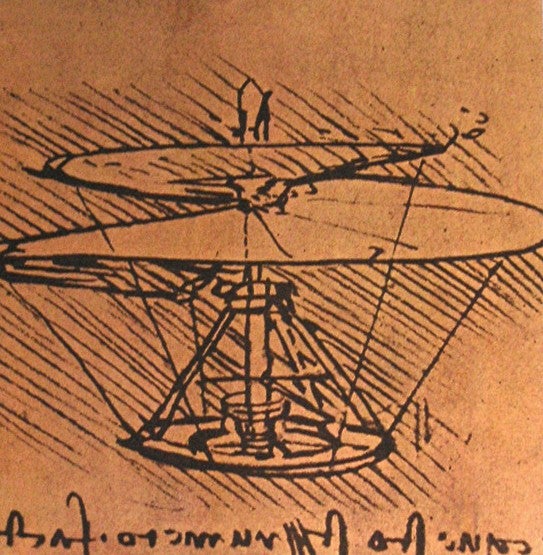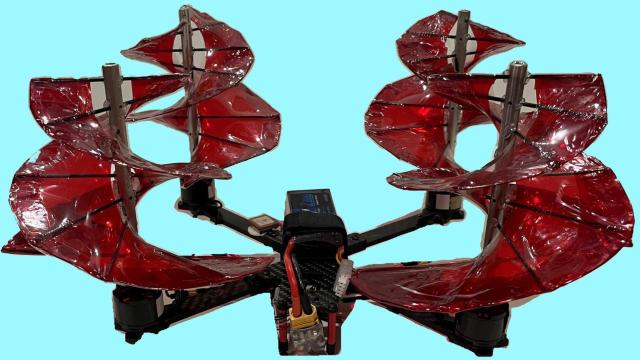Leonardo da Vinci is best known for works like the Mona Lisa and The Last Supper, but what you might not know is that in the 1480s — hundreds of years before the first flight — the polymath sketched a design for an aircraft. Lacking the right materials, da Vinci never built or tested the helicopter-like device, leaving us to wonder whether this early mockup could even gain altitude.
It turns out, it can. A team of engineers at the University of Maryland used da Vinci’s sketches to create a functional drone for a flight design contest (via CNET). Called Crimson Spin, the device is a small, unmanned quadcopter drone with wings inspired by da Vinci’s “aerial screw” design, which used the concept of an Archimedes’ screw to push against air in order to obtain flight.
The drone has four corkscrew-shaped wings made of plastic, but instead of having someone hand spin (or pump) them as da Vinci proposed, these wings are powered by batteries and electric motors. Much like today’s drones, this creation relies on small changes to propeller speed to tilt one direction or the other. Creating a single-shaft design as seen in da Vinci’s sketches would have been far more complex and required some of the technology used in modern helicopters.
Austin Prete, who is part of the project’s engineering team and built Crimson Spin for his master’s degree, flew the device over several short journeys and presented the first video of the aircraft flying at the Transformative Vertical Flight conference.

“I was absolutely surprised it worked,” Prete, a graduate student in the university’s aerospace engineering department, told CNET. He says the aircraft creates a twisting vortex of air on the edge of each wing that spirals downward and creates upward thrust.
We might not be flying around on a 530-year-old helicopter design, but this project comes as the use of VTOL, or vertical take-off and landing, aircraft have gained interest for their potential ability to deliver packages or be used as aerial taxis. The unique aerodynamics of Crimson Spin addresses a few of the many challenges faced by VTOLs in that it produces less downwash and would likely be quieter than conventional propellers.
This functioning aerial screw is a small drone about the size of a DJI you might find at Best Buy, but Prete believes it could be enhanced through “geometry optimizations and investigations into the performance in different flight regimes” and may scale up to carry a passenger. While he won’t be working on it anymore (he’s accepted a position in the industry) Prete believes research may continue at the University of Maryland provided there is interest and funding.
“It can be a practical hover machine capable of potentially scaling up to human-carrying capability, but I don’t see it being used in modern company designs until more research is conducted on the function, reliability, and performance. It may end up working in similar positions as ducted rotors though,” Prete told Gizmodo.
